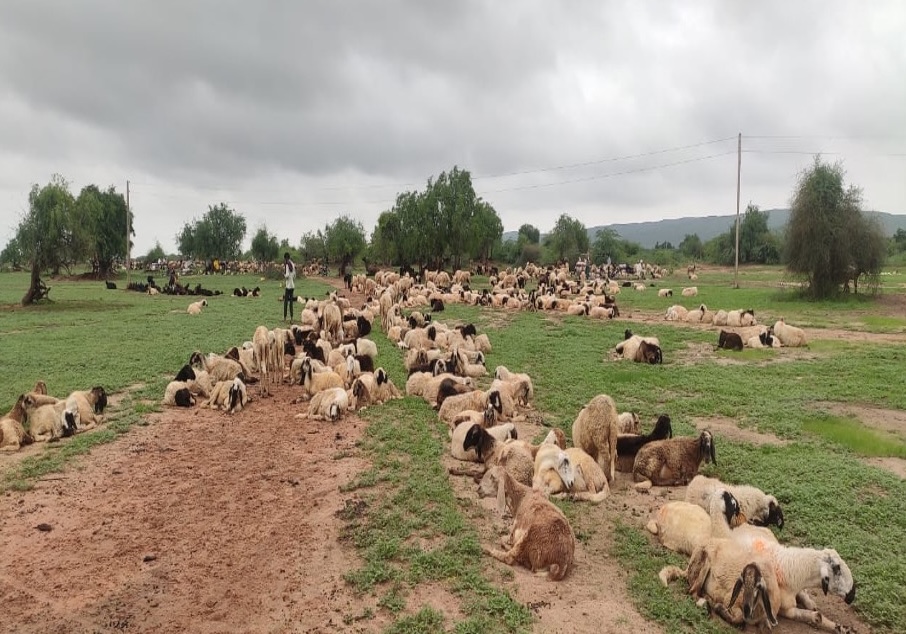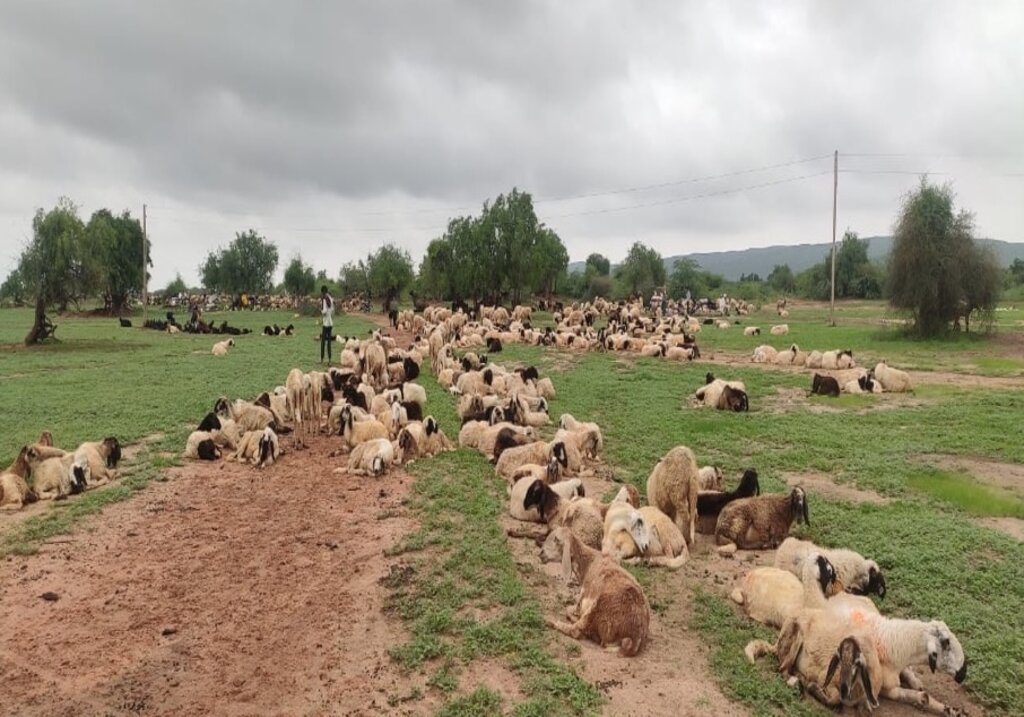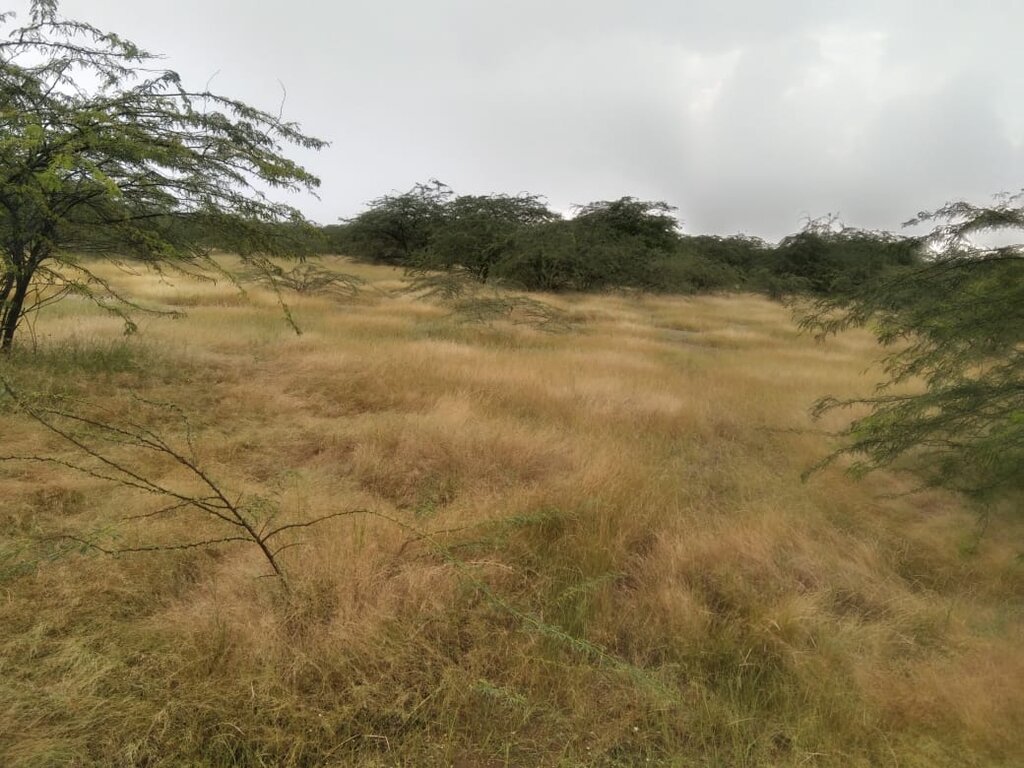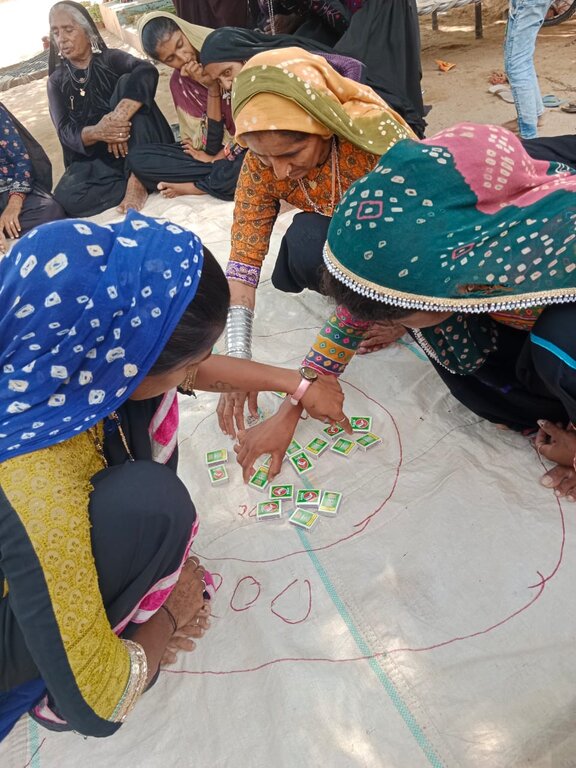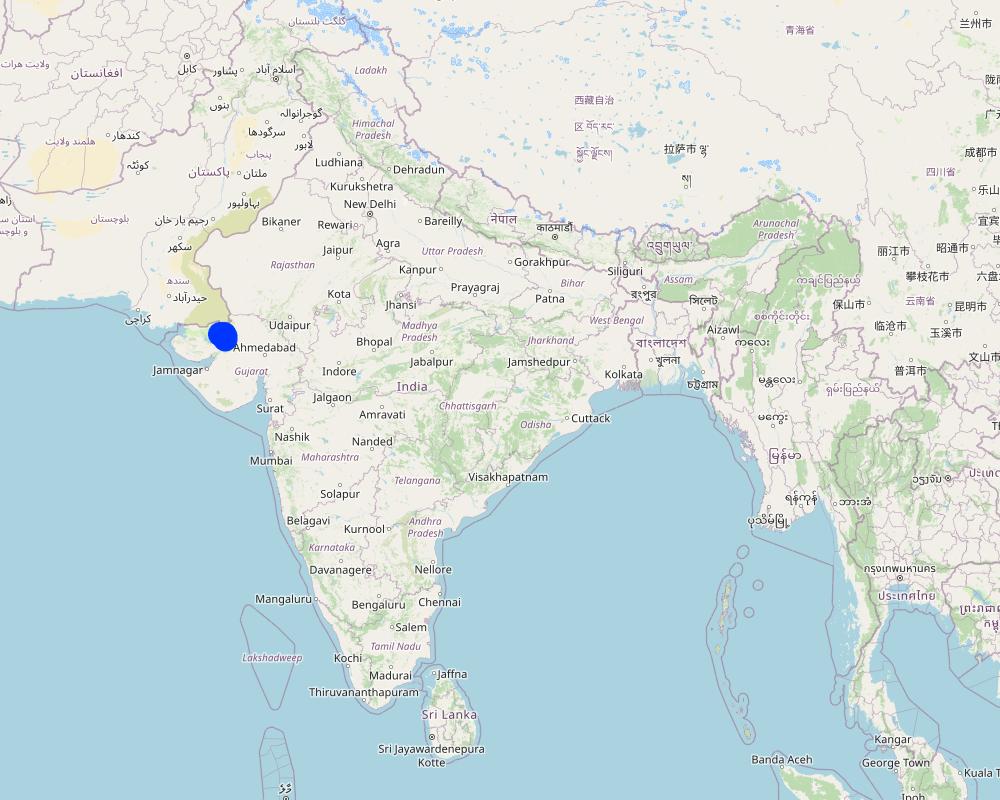TRANSFORMING VILLAGE WASTELAND INTO A RICH PASTURE [ប្រទេសឥណ្ឌា]
- ការបង្កើត៖
- បច្ចុប្បន្នភាព
- អ្នកចងក្រង៖ Bhavana Rabari
- អ្នកកែសម្រួល៖ –
- អ្នកត្រួតពិនិត្យ Udo Höggel
Jamin Sudharana
technologies_7423 - ប្រទេសឥណ្ឌា
ពិនិត្យមើលគ្រប់ផ្នែក
ពង្រីកមើលទាំងអស់ បង្រួមទាំងអស់1. ព័ត៌មានទូទៅ
1.2 ព័ត៌មានលម្អិតពីបុគ្គលសំខាន់ៗ និងស្ថាប័នដែលចូលរួមក្នុងការវាយតម្លៃ និងចងក្រងឯកសារនៃបច្ចេកទេស
បុគ្គលសំខាន់ម្នាក់ (ច្រើននាក់)
Project Co-ordinator:
Desai Bhavana
Maldhari Rural Action Group
ប្រទេសឥណ្ឌា
Communication Officer:
Sheth Megha
MARAG - Maldhari Rural Action Group
ប្រទេសឥណ្ឌា
ឈ្មោះអង្គភាពមួយ (ច្រើន) ដែលបានចងក្រងឯកសារ/ វាយតម្លៃបច្ចេកទេស (បើទាក់ទង)
Maldhari Rural Action Group (MARAG)1.3 លក្ខខណ្ឌទាក់ទងទៅនឹងការប្រើប្រាស់ទិន្នន័យដែលបានចងក្រងតាមរយៈ វ៉ូខេត
អ្នកចងក្រង និង(បុគ្គលសំខាន់ៗ)យល់ព្រមទទួលយកនូវលក្ខខណ្ឌនានាទាក់ទងទៅនឹងការប្រើប្រាស់ទិន្នន័យដែលបានចងក្រងតាមរយៈវ៉ូខេត:
បាទ/ចា៎
1.4 សេចក្តីប្រកាសស្តីពីចីរភាពនៃការពណ៌នាពីបច្ចេកទេស
តើបច្ចេកទេសដែលបានពណ៌នានេះមានបញ្ហាដែលផ្តោតលើការធ្លាក់ចុះគុណភាពដី, បើដូច្នេះវាមិនអាចត្រូវបានប្រកាសថាជាបច្ចេកទេសនៃការគ្រប់គ្រងប្រកបដោយចីរភាពទេ?
ទេ
2. ការពណ៌នាពីបច្ចេកទេស SLM
2.1 ការពណ៌នាដោយសង្ខេបពីបច្ចេកទេស
និយមន័យបច្ចេកទេស:
Under the leadership of the Pastoralist Women Land Management Committee at village level, 100 acers of village wasteland were transformed into a rich pastures to be used by village livestock herds and, in this way providing food and livelihood security to local communities and restoring biodiversity within native grasses and indigenous livestock breeds.
2.2 ការពណ៌នាលម្អិតពីបច្ចេកទេស
ការពណ៌នា:
Overview
The initial project focused on 10 villages within Kutch District, Gujarat, Western India. Each of these villages developed 10 acres of associated common pastureland. In total, 100 acres were developed. The project offered local solutions to develop village wastelands (common term in India for degraded lands) into ecologically regenerated pasturelands. Village pastureland, developed in such manner was used for open and free grazing for livestock. This enhanced milk production thus generating income for village women and their families.
Process
MARAG formed a WPLMC (Women’s Pastureland Management Committee) in each village consisting of 10 members. Each WPLMC managed 10 acres of these common pasturelands in their respective villages. WPLMCs were trained and engaged in land mapping and demarcation through GPS, soil testing, land cleaning and land levelling, selection of native grass seeds, sowing of such grasses, and general maintenance and management of the land.
The rules and regulations for land management were determined by the WPLMCs. WPLMCs jointly decided to use 5 of 10 acres of each village gaucher (local term for pasture) to develop traditional grasses for small ruminants. Out of this, 2.5 acres were developed as fodder for large livestock and 2.5 acres were developed for drought tolerant species. Finally, the WPLMCs documented the regulation and use of pastureland and the responsibility of the management.
The following processes were employed for pastureland regeneration:
1.Silvipasture practice
2.Land treatment and afforestation
3.Reintroduction of traditional grass seeds.
4.Tapping of indigenous pastoral knowledge for grass development and breed conservation.
5.Forming and strengthening Women Pastureland Management Committees (WPLMC) at village level for project sustainability.
6.Using technology and capacity building of the WPLMC (e.g. GPS tools for land measuring, mobile app use for determining land fertility and water catchment etc.)
Livestock rearing can be a tool for the sustainable management of land, especially in arid and semiarid areas, by improving soil health, mitigating desertification and protecting the local ecosystem against invasive species. Sustanable livestock grazing breaks soil crust, increasing rain water absorpstion and converts grass into organic waste, increasing soil health and regenarating grasses by spreading seed.
Project Impact
1.Developed women leadership and management capacities as well as decision making throughout the project process.
2.Ownership of the pastureland development taken by pastoralist women.
3.Pastoralist women learning and using the smartphone for land mapping. Such knowledge is easily copied by other women in the village.
4.Traditional knowledge on pasture grasses women to deepen their knowledge on pasture management.
5.Biodiversity conservation through traditional knowledge.
6.Secured livelihood security and food sovereignty.
2.3 រូបភាពនៃបច្ចេកទេស
2.4 វីដេអូនៃបច្ចេកទេស
ឈ្មោះអ្នកថតវីឌីអូ:
Bhavana Rabari
2.5 ប្រទេស/តំបន់/ទីតាំងកន្លែង ដែលបច្ចេកទេសត្រូវបានអនុវត្ត និងបានគ្រប់ដណ្តប់ដោយការវាយតម្លៃនេះ
ប្រទេស:
ប្រទេសឥណ្ឌា
តំបន់/រដ្ឋ/ខេត្ត:
Gujarat
បញ្ជាក់បន្ថែមពីលក្ខណៈនៃទីតាំង:
Dhabda village of Kutch District
បញ្ជាក់ពីការសាយភាយនៃបច្ចេកទេស:
- អនុវត្តនៅកន្លែងជាក់លាក់មួយ/ ប្រមូលផ្តុំនៅតំបន់តូចៗ
តើបច្ចេកទេស (មួយ ឬច្រើន) ទាំងនោះស្ថិតនៅក្នុងតំបន់ការពារជាអចិន្ត្រៃយ៍ណាមួយដែរឬទេ?
ទេ
Map
×2.6 កាលបរិច្ឆេទនៃការអនុវត្ត
បង្ហាញឆ្នាំនៃការចុះអនុវត្ត:
2022
2.7 ការណែនាំពីបច្ចេកទេស
សូមបញ្ជាក់តើបច្ចេកទេសត្រូវបានណែនាំឱ្យអនុវត្តដោយរបៀបណា:
- ជាផ្នែកនៃប្រព័ន្ធប្រពៃណី (> 50 ឆ្នាំ)
មតិយោបល់ (ប្រភេទនៃគម្រោង ។ល។):
It is rooted in traditional practices but now incorporates technology. Pastoralists use smartphones to map grazing lands, identify water catchment areas, and determine more fertile land.
3. ចំណាត់ថ្នាក់នៃបច្ចេកទេស SLM
3.1 គោលបំណងចម្បង (១ ឬច្រើន) នៃបច្ចេកទេសនេះ
- កាត់បន្ថយ, បង្ការ, ស្តារឡើងវិញនូវការធ្លាក់ចុះគុណភាពដី
- អភិរក្សប្រព័ន្ធអេកូឡូស៊ី
- អភិរក្ស/ធ្វើឱ្យប្រសើរឡើងជីវចម្រុះ
- បង្កើតផលប្រយោជន៍សេដ្ឋកិច្ច
- បង្កើតផលប្រយោជន៍សង្គម
3.2 ប្រភេទដីប្រើប្រាស់មួយប្រភេទ (ច្រើនប្រភេទ) ដែលបានអនុវត្តបច្ចេកទេស
ដីប្រើប្រាស់ចម្រុះនៅលើដីតែមួយ:
បាទ/ចា៎
បញ្ជាក់ពីប្រភេទដីច្រើនប្រភេទ (ដីដាំដំណាំ/ដីចិញ្ចឹមសត្វ/ដីព្រៃឈើ):
- ដីព្រៃឈើ និងដីចិញ្ចឹមសត្វ
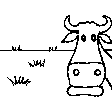
ដីសម្រាប់ចិញ្ចឹមសត្វ
វាលស្មៅធំៗ:
- ពាក់កណ្តាលពនេចរ
ដីវាលស្មៅតូចៗ/ ផលិតកម្មចំណី:
- បង្កើនវាលស្មៅ
ប្រភេទសត្វ:
- សត្វក្របី
- សត្វពាហនៈ - សត្វចិញ្ចឹមយកទឹកដោះ
- សត្វពពែ
- សត្វចៀម
តើជាការអនុវត្តការគ្រប់គ្រងដែលរួមបញ្ចូលការដាំដំណាំ និងចិញ្ចឹមសត្វដែរឬទេ?
ទេ
ផលិតផល និងសេវាកម្ម:
- economic security, investment prestige
- ទឹកដោះគោ
- រោមសត្វ
ប្រភេទពូជ:
សត្វក្របី
ប្រភេទពូជ:
សត្វពាហនៈ - សត្វចិញ្ចឹមយកទឹកដោះ
ប្រភេទពូជ:
សត្វពពែ
ប្រភេទពូជ:
សត្វចៀម
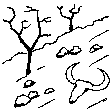
ដីខ្សោះជីជាតិ
សូមបញ្ជាក់:
Village wasteland
3.3 បន្ទាប់ពីអនុវត្តបច្ចេកទេស តើដីប្រើប្រាស់មានការប្រែប្រួលដែររឺទេ?
បន្ទាប់ពីអនុវត្តបច្ចេកទេស តើដីប្រើប្រាស់មានការប្រែប្រួលដែររឺទេ?
- ទេ (បន្តទៅសំណួរ 3.4)
3.4 ការផ្គត់ផ្គង់ទឹក
ការផ្គត់ផ្គង់ទឹកនៅកន្លែងអនុវត្តបច្ចេកទេស:
- ទឹកភ្លៀង
3.5 ក្រុម SLM ដែលបច្ចេកទេសស្ថិតនៅក្នុង
- កសិរុក្ខកម្ម (pastoralism) និងការគ្រប់គ្រងដីសម្រាប់ចិញ្ចឹមសត្វ
- ធ្វើឱ្យប្រសើរឡើងគម្របដី/ ដំណាំគម្របដី
- ការគ្រប់គ្រងទឹកក្រោមដី
3.6 វិធានការ SLM ដែលបញ្ចូលនូវបច្ចេកទេស
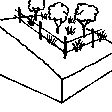
វិធានការគ្រប់គ្រង
- M2: ការផ្លាស់ប្តូរការគ្រប់គ្រង/ កម្រិតអាំងតង់ស៊ីតេ
- M3: ប្លង់យោងទៅតាមធម្មជាតិ និងបរិស្ថានធម្មជាតិ
- M5: គ្រប់គ្រង/ ការប្លាស់ប្តូរសមាសភាពពូជ
3.7 កំណត់ប្រភេទនៃការធ្លាក់ចុះគុណភាពដីសំខាន់ៗដែលបច្ចេកទេសនេះបានដោះស្រាយ

ការបាត់ដីដោយសារខ្យល់
- Et: ការបាត់បង់ដីស្រទាប់លើ

ការធ្លាក់ចុះជីវសាស្ត្រនៃដី
- Bc: ការថយចុះនូវគម្របរុក្ខជាតិ
- Bh: ការបាត់បង់ទីជំរក
- Bq: ការថយចុះនូវជីវម៉ាស/ បរិមាណ
- Bs: សមាសភាពដែលមានគុណភាពនិងប្រភេទសត្វ/ការថយចុះនូវជីវចម្រុះ
3.8 ការពារ កាត់បន្ថយ ឬស្តារឡើងវិញនៃការធ្លាក់ចុះគុណភាពដី
បញ្ជាក់ពីគោលដៅរបស់បច្ចេកទេស ដែលផ្តោតទៅការធ្លាក់ចុះគុណភាពដី:
- ការការពារការធ្លាក់ចុះគុណភាពដី
- ការជួសជុល/ ស្តារឡើងវិញនៃឱនភាពដីធ្ងន់ធ្ងរ
4. បច្ចេកទេសជាក់លាក់ សកម្មភាពអនុវត្ត ធាតុចូល និងថ្លៃដើម
4.1 គំនូសបច្ចេកទេសនៃបច្ចេកទេសនេះ
លក្ខណៈពិសេសនៃបច្ចេកទេស (ទាក់ទងនឺងគំនូរបច្ចេកទេស):
Four squares of pastureland from a total of 10 acres pastureland per village, mainly at the same altitude without any slope were developed. Trees and cultivating native and indigenous grasses species with women's traditional knowledge were in focus.
ឈ្មោះអ្នកនិពន្ធ:
MARAG - Maldhari Rural Action Group (Community)
កាលបរិច្ឆេទ:
01/08/2024
4.2 ព័ត៌មានទូទៅដែលពាក់ព័ន្ធនឹងការគណនាធាតុចូល និងថ្លៃដើម
កំណត់របៀបនៃការគណនាថ្លៃដើម និងធាតុចូល:
- ក្នុងតំបន់អនុវត្តបច្ចេកទេស
កំណត់ទំហំ និងឯកត្តាផ្ទៃដី:
10 acres
បើសិនប្រើឯកតាតាមតំបន់ សូមបញ្ជាក់តម្លៃបម្លែងវាទៅជាហិកតា (ឧ. 1 ហិកតា = 2.47 អា)៖ 1 ហិកតា =:
1 hectare = 2,47 acres
ផ្សេងៗ/ រូបិយប័ណ្ណជាតិ (បញ្ជាក់):
INR
បើពាក់ព័ន្ធសូមកំណត់អត្រាប្តូរប្រាក់ពីដុល្លាទៅរូបិយប័ណ្ណតំបន់ (ឧ. 1 ដុល្លារ = 79.9 រៀលនៃរូបិយប័ណ្ណប្រេស៊ីល) ៖ 1 ដុល្លារ =:
84,35
កំណត់ថ្លៃឈ្នួលជាមធ្យមនៃការជួលកម្លាំងពលកម្មក្នុងមួយថ្ងៃ:
250
4.3 សកម្មភាពបង្កើត
| សកម្មភាព | រយៈពេល (រដូវកាល) | |
|---|---|---|
| 1. | Organising pastoral women management committee | September - October |
| 2. | Capacity building of committee on SLM technologies | December, year 1 |
| 3. | User rights for the village wasteland under WPLMC from revenue department | November - December year 1 |
| 4. | Removal of invasive species | January- February |
| 5. | Land leveling | March - Before Monsoon |
| 6. | Pasture border trenches | April - Before Monsoon |
| 7. | Sowing of grasses and tree planting | July - August |
| 8. | Rain-fed irrigation | Throughout Monsoon (June to October) |
| 9. | Protection from wild animals | April - December year 1 |
| 10. | Livestock grazing | August till grass ends |
| 11. | Fodder harvesting | November - March |
| 12. | Establishing and implementation of pastureland user and management rights | December year 1, December year 2 |
4.4 ថ្លៃដើម និងធាតុចូលដែលត្រូវការសម្រាប់ការបង្កើតបច្ចេកទេស
| បញ្ជាក់ពីធាតុចូល | ឯកតា | បរិមាណ | ថ្លៃដើមក្នុងមួយឯកតា | ថ្លៃធាតុចូលសរុប | % នៃថ្លៃដើមដែលចំណាយដោយអ្នកប្រើប្រាស់ដី | |
|---|---|---|---|---|---|---|
| កម្លាំងពលកម្ម | GPS - mapping | Person-Day | 2,0 | 500,0 | 1000,0 | |
| កម្លាំងពលកម្ម | Land leveling and preparation | Person | 15,0 | 550,0 | 8250,0 | 25,0 |
| កម្លាំងពលកម្ម | Seed sowing | Person | 3,0 | 700,0 | 2100,0 | 100,0 |
| កម្លាំងពលកម្ម | Tree plantation | Person | 12,0 | 300,0 | 3600,0 | 100,0 |
| កម្លាំងពលកម្ម | Pastureland security guard | Person | 6,0 | 500,0 | 3000,0 | 50,0 |
| កម្លាំងពលកម្ម | Fodder harvest | Person | 10,0 | 200,0 | 2000,0 | 40,0 |
| សម្ភារៈ | Smart Phone | Piece | 1,0 | 14000,0 | 14000,0 | 100,0 |
| សម្ភារៈ | JCB (backhoe tractor for land levelling) | per Hour | 12,0 | 900,0 | 10800,0 | |
| សម្ភារៈ | Tractor | Per Hour | 25,0 | 700,0 | 17500,0 | |
| សម្ភារៈ | Tree Guard | Piece | 17,0 | 550,0 | 9350,0 | 30,0 |
| សម្ភារៈ | Fencing Material | Kg | 50,0 | 70,0 | 3500,0 | |
| សម្ភារៈ | Farming tools | Piece | 6,0 | 350,0 | 2100,0 | 50,0 |
| សម្ភារៈដាំដុះ | Grass seeds | Kg | 400,0 | 50,0 | 20000,0 | 30,0 |
| សម្ភារៈដាំដុះ | Tree saplings | No of plants | 125,0 | 50,0 | 6250,0 | 100,0 |
| ជី និងសារធាតុពុល | Manure | No of Trolly | 3,0 | 1500,0 | 4500,0 | 100,0 |
| ជី និងសារធាតុពុល | Biofertilizer | No of Trolly | 2,0 | 1500,0 | 3000,0 | 100,0 |
| ថ្លៃដើមសរុបក្នុងការបង្កើតបច្ចេកទេស | 110950,0 | |||||
| ថ្លៃដើមសរុបក្នុងការបង្កើតបច្ចេកទេសគិតជាដុល្លារ | 1315,35 | |||||
ប្រសិនបើអ្នកប្រើប្រាស់ដីមិនមានថ្លៃដើម 100% សូមបញ្ជាក់ថានរណាដែលចំណាយថ្លៃដើមដែលនៅសល់:
Project and other volunteers
មតិយោបល់:
In some cases where women contributed 100%, such amount was often contributed by in-kind work or by labourforce.
4.5 សកម្មភាពថែទាំ
| សកម្មភាព | ពេលវេលា/ ភាពញឹកញាប់ | |
|---|---|---|
| 1. | Trench repairing | April - pre monsoon |
| 2. | Removal of invasive spices | May - pre monsoon |
| 3. | Seed sowing | July - onset monsoon |
| 4. | Irrigation in extreme cases | Winter - Summer |
| 5. | Harvesting | Post monsoon |
4.6 កំណត់ថ្លៃដើមសម្រាប់ការថែទាំ/ សកម្មភាពរបស់បច្ចេកទេស (ក្នុងរយៈពេលមួយឆ្នាំ)
| បញ្ជាក់ពីធាតុចូល | ឯកតា | បរិមាណ | ថ្លៃដើមក្នុងមួយឯកតា | ថ្លៃធាតុចូលសរុប | % នៃថ្លៃដើមដែលចំណាយដោយអ្នកប្រើប្រាស់ដី | |
|---|---|---|---|---|---|---|
| កម្លាំងពលកម្ម | Trench repairing | per person | 7,0 | 500,0 | 3500,0 | 100,0 |
| កម្លាំងពលកម្ម | Removal of invasive species | per person | 10,0 | 550,0 | 5500,0 | 100,0 |
| កម្លាំងពលកម្ម | Seed sowing | per person | 3,0 | 700,0 | 2100,0 | 100,0 |
| កម្លាំងពលកម្ម | Irrigation | per person | 3,0 | 350,0 | 1050,0 | 100,0 |
| កម្លាំងពលកម្ម | Harvest | per person | 10,0 | 200,0 | 2000,0 | 100,0 |
| សម្ភារៈ | Water charges (watering tree saplings) | No of tanks | 7,0 | 1200,0 | 8400,0 | |
| សម្ភារៈដាំដុះ | Seed ( fodder seeds, e.g. sorghum species) | kg | 400,0 | 50,0 | 20000,0 | |
| សម្ភារៈដាំដុះ | Tree saplings | no of plants | 20,0 | 50,0 | 1000,0 | 100,0 |
| ជី និងសារធាតុពុល | Manure | per trolly | 3,0 | 1500,0 | 4500,0 | 100,0 |
| ជី និងសារធាតុពុល | Bio fertilizer | per trolly | 2,0 | 1500,0 | 3000,0 | 100,0 |
| ផ្សេងៗ | Soil testing | per test | 1,0 | 1000,0 | 1000,0 | 100,0 |
| ថ្លៃដើមសរុបសម្រាប់ការថែទាំដំណាំតាមបច្ចេកទេស | 52050,0 | |||||
| ថ្លៃដើមសរុបសម្រាប់ការថែទាំដំណាំតាមបច្ចេកទេសគិតជាដុល្លារ | 617,07 | |||||
ប្រសិនបើអ្នកប្រើប្រាស់ដីមិនមានថ្លៃដើម 100% សូមបញ្ជាក់ថានរណាដែលចំណាយថ្លៃដើមដែលនៅសល់:
The management committee covered the remaining costs using earnings from the previous year's fodder cultivation thus ensuring sustainability for the next cycle.
4.7 កត្តាសំខាន់បំផុតដែលមានឥទ្ធិពលដល់ការចំណាយ
ពណ៌នាពីកត្តាប៉ះពាល់ចម្បងៗទៅលើថ្លៃដើម:
Climate uncertainty, availability of land under the Revenue Office, irregular rains.
5. លក្ខណៈបរិស្ថានធម្មជាតិ និងមនុស្ស
5.1 អាកាសធាតុ
បរិមាណទឹកភ្លៀងប្រចាំឆ្នាំ
- < 250 មម
- 251-500 មម
- 501-750 មម
- 751-1,000 មម
- 1,001-1,500 មម
- 1,501-2,000 មម
- 2,001-3,000 មម
- 3,001-4,000 មម
- > 4,000 មម
កំណត់បរិមាណទឹកភ្លៀង (បើដឹង) ជា មីលីម៉ែត្រ:
410,00
លក្ខណៈពិសេស/ មតិយោបល់លើរដូវភ្លៀង:
Historically arid and semi-arid region.
បញ្ជាក់ឈ្មោះឯកសារយោងនៃស្ថានីយឧតុនិយម:
Bhuj - Weather Station
តំបន់កសិអាកាសធាតុ
- មានភ្លៀងតិចតួច
Over 40°C in the summer and averaging around 20°C in the winter, 30°C during monsoon.
5.2 សណ្ឋានដី
ជម្រាលជាមធ្យម:
- រាបស្មើ (0-2%)
- ជម្រាលតិចតួច (3-5%)
- មធ្យម (6-10%)
- ជម្រាលខ្ពស់បន្តិច (11-15%)
- ទីទួល (16-30%)
- ទីទួលចោត (31-60%)
- ទីទួលចោតខ្លាំង (>60%)
ទម្រង់ដី:
- ខ្ពង់រាប
- កំពូលភ្នំ
- ជម្រាលភ្នំ
- ជម្រាលទួល
- ជម្រាលជើងភ្នំ
- បាតជ្រលងភ្នំ
តំបន់តាមរយៈកម្ពស់ :
- 0-100 ម
- 101-500 ម
- 501-1,000 ម
- 1,001-1,500 ម
- 1,501-2,000 ម
- 2,001-2,500 ម
- 2,501-3,000 ម
- 3,001-4,000 ម
- > 4,000 ម
បញ្ជាក់ថាតើបច្ចេកទេសនេះត្រូវបានអនុវត្តន៍នៅក្នុង:
- មិនពាក់ព័ន្ធទាំងអស់
5.3 ដី
ជម្រៅដីជាមធ្យម:
- រាក់ខ្លាំង (0-20 សម)
- រាក់ (21-50 សម)
- មធ្យម (51-80 សម)
- ជ្រៅ (81-120 សម)
- ជ្រៅខ្លាំង (> 120 សម)
វាយនភាពដី (ស្រទាប់លើ):
- គ្រើម/ មានពន្លឺ (ខ្សាច់)
វាយនភាពដី (> 20 សម ស្រទាប់ក្នុង):
- ម៉ត់/ ធ្ងន់ (ឥដ្ឋ)
សារធាតុសរីរាង្គនៅស្រទាប់ដីខាងលើ:
- ទាប (<1%)
5.4 ទឹកដែលអាចទាញមកប្រើប្រាស់បាន និងគុណភាពទឹក
នីវ៉ូទឹកក្រោមដី:
> 50 ម
ទឹកលើដីដែលអាចទាញយកប្រើប្រាស់បាន:
មិនមាន/ គ្មាន
គុណភាពទឹក (មិនបានធ្វើប្រត្តិកម្ម):
ទឹកសម្រាប់តែការធ្វើកសិកម្ម (ស្រោចស្រព)
គុណភាពទឹក គឺផ្តោតទៅលើ៖:
ទឹកក្រោមដី
តើមានបញ្ហាភាពទឹកប្រៃហូរចូលមកដែរឬទេ?
បាទ/ចា៎
តើទឹកជំនន់កំពុងកើតមាននៅតំបន់នេះដែររឺទេ?
ទេ
5.5 ជីវៈចម្រុះ
ភាពសម្បូរបែបនៃប្រភេទ:
- ទាប
ភាពសម្បូរបែបនៃទីជម្រក:
- ទាប
មតិយោបល់ និងលក្ខណៈពិសេសផ្សេងទៀតលើជីវចម្រុះ:
Before 40 years, the region was rich in biodiversity. Yet, considering modern challenges like industrialisation, migration, land encroachment, climate change and desertification, this biodiversity is in danger.
5.6 លក្ខណៈនៃអ្នកប្រើប្រាស់ដីដែលអនុវត្តបច្ចេកទេស
នៅមួយកន្លែង ឬពនេចរ :
- ពាក់កណ្តាលពនេចរ
ទីផ្សារនៃប្រព័ន្ធផលិតកម្ម:
- ពាក់កណ្តាលពាណិជ្ជកម្ម (ផ្គត់ផ្គង់ខ្លួនឯង/ ពាណិជ្ជកម្ម)
ចំណូលក្រៅកសិកម្ម:
- តិចជាង 10% នៃចំណូល
កម្រិតជីវភាព:
- មិនល្អ
ឯកជន ឬក្រុម:
- ជាក្រុម/ សហគមន៍
កម្រិតប្រើប្រាស់គ្រឿងយន្ត:
- ប្រើកម្លាំងពលកម្ម
យេនឌ័រ:
- ស្ត្រី
អាយុរបស់អ្នកប្រើប្រាស់ដី:
- យុវវ័យ
- វ័យកណ្តាល
5.7 ទំហំផ្ទៃដីជាមធ្យមនៃដីប្រើប្រាស់ដោយអ្នកប្រើប្រាស់ដី ក្នុងការអនុវត្តបច្ចេកទេស
- < 0.5 ហិកតា
- 0.5-1 ហិកតា
- 1-2 ហិកតា
- 2-5 ហិកតា
- 5-15 ហិកតា
- 15-50 ហិកតា
- 50-100 ហិកតា
- 100-500 ហិកតា
- 500-1,000 ហិកតា
- 1,000-10,000 ហិកតា
- > 10,000 ហិកតា
តើផ្ទៃដីនេះចាត់ទុកជាទំហំកម្រិតណាដែរ ខ្នាតតូច មធ្យម ឬខ្នាតធំ (ធៀបនឹងបរិបទតំបន់)?
- ខ្នាតមធ្យម
5.8 ភាពជាម្ចាស់ដី កម្មសិទ្ធប្រើប្រាស់ដី និងកម្មសិទ្ធប្រើប្រាស់ទឹក
ភាពជាម្ចាស់ដី:
- រដ្ឋ
កម្មសិទ្ធិប្រើប្រាស់ដី:
- ជាក្រុម (មានដែនកំណត់)
កម្មសិទ្ធប្រើប្រាស់ទឹក:
- អាស្រ័យផលសេរី (មិនមានការកំណត់)
តើកម្មសិទ្ធប្រើប្រាស់ដី គឺផ្អែកលើប្រព័ន្ធច្បាប់បែបបុរាណ?
បាទ/ចា៎
5.9 ការប្រើប្រាស់សេវាកម្ម និងហេដ្ឋារចនាសម្ព័ន្ធ
សុខភាព:
- មិនល្អ
- មធ្យម
- ល្អ
ការអប់រំ:
- មិនល្អ
- មធ្យម
- ល្អ
ជំនួយបច្ចេកទេស:
- មិនល្អ
- មធ្យម
- ល្អ
ការងារ (ឧ. ការងារក្រៅកសិដ្ឋាន):
- មិនល្អ
- មធ្យម
- ល្អ
ទីផ្សារ:
- មិនល្អ
- មធ្យម
- ល្អ
ថាមពល:
- មិនល្អ
- មធ្យម
- ល្អ
ផ្លូវ និងការដឹកជញ្ជូន:
- មិនល្អ
- មធ្យម
- ល្អ
ទឹកផឹក និងអនាម័យ:
- មិនល្អ
- មធ្យម
- ល្អ
សេវាកម្មហិរញ្ញវត្ថុ:
- មិនល្អ
- មធ្យម
- ល្អ
6. ផលប៉ះពាល់ និងការសន្និដ្ឋាន
6.1 ផលប៉ះពាល់ក្នុងបរិវេណអនុវត្តបច្ចេកទេសដែលកើតមាន
ផលប៉ះពាល់លើសេដ្ឋកិច្ចសង្គម
ផលិតផល
ផលិតកម្មចំណីសត្វ
គុណភាពមុន SLM:
0
គុណភាពក្រោយ SLM:
10%
គុណភាពចំណីសត្វ
មតិយោបល់/ ការបញ្ជាក់:
Cultivation of indigenous fodder lead to qualitative fodder for livestock.
ការគ្រប់គ្រងដី
គុណភាពក្រោយ SLM:
75%
មតិយោបល់/ ការបញ្ជាក់:
Priorly Wasteland was not managed at all. With the onset of the project , land is now managed and yields results for the people who live from the land. In this way land management is simplified and productive.
ផលប៉ះពាល់ទៅលើវប្បធម៌សង្គម
សន្តិសុខស្បៀង/ ភាពគ្រប់គ្រាន់ខ្លួនឯង
មតិយោបល់/ ការបញ្ជាក់:
Food sovereignty of livestock improved.
Traditional knowledge conservation
មតិយោបល់/ ការបញ្ជាក់:
The process of transforming wasteland to rich pasture by the community led to reviving as well as improving traditional knowledge of grass- and breed management and conservation.
ផលប៉ះពាល់ទៅលើអេកូឡូស៊ី
ជីវចម្រុះ៖ ដំណាំ, សត្វ
ដំណាំគម្រប
ភាពសម្បូរបែបនៃរុក្ខជាតិ
មតិយោបល់/ ការបញ្ជាក់:
Indigenous plants survive under extreme climatic conditions.
6.2 ផលប៉ះពាល់ក្រៅបរិវេណអនុវត្តបច្ចេកទេសដែលកើតមាន
វាយតម្លៃផលប៉ះពាល់ក្រៅបរិវេណអនុវត្តបច្ចេកទេស (វាស់វែង):
Restored pastureland cater to livestock from the site as well as off site community. Helps the migrating pastoralist as well.
6.3 ភាពប្រឈម និងភាពរួសនៃបច្ចេកទេសទៅនឹងការប្រែប្រួលអាកាសធាតុ និងគ្រោះអាកាសធាតុ/ គ្រោះមហន្តរាយ (ដែលដឹងដោយអ្នកប្រើប្រាស់ដី)
ការប្រែប្រួលអាកាសធាតុ
ការប្រែប្រួលអាកាសធាតុ
| រដូវកាល | កើនឡើង ឬថយចុះ | លក្ខណៈឆ្លើយតបនៃបច្ចេកទេសទៅនឹងការប្រែប្រួលអាកាសធាតុ | |
|---|---|---|---|
| សីតុណ្ហភាពប្រចាំឆ្នាំ | កើនឡើង | មធ្យម | |
| សីតុណ្ហភាពប្រចាំរដូវកាល | រដូវក្តៅ | កើនឡើង | មធ្យម |
| បរិមាណទឹកភ្លៀងប្រចាំឆ្នាំ | កើនឡើង | មធ្យម | |
| បរិមាណទឹកភ្លៀងប្រចាំរដូវកាល | សើម/រដូវភ្លៀង | កើនឡើង | មធ្យម |
គ្រោះអាកាសធាតុ (មហន្តរាយ)
គ្រោះមហន្តរាយធម្មជាតិ
| លក្ខណៈឆ្លើយតបនៃបច្ចេកទេសទៅនឹងការប្រែប្រួលអាកាសធាតុ | |
|---|---|
| ព្យុះភ្លៀងតាមតំបន់ | មធ្យម |
គ្រោះមហន្តរាយអាកាសធាតុ
| លក្ខណៈឆ្លើយតបនៃបច្ចេកទេសទៅនឹងការប្រែប្រួលអាកាសធាតុ | |
|---|---|
| រាំងស្ងួត | ល្អ |
6.4 ការវិភាគថ្លៃដើម និងអត្ថប្រយោជន៍
តើផលចំណេញ និងថ្លៃដើមត្រូវបានប្រៀបធៀបគ្នាយ៉ាងដូចម្តេច (ទស្សនៈរបស់អ្នកប្រើប្រាស់ដី)?
រយៈពេលខ្លី:
វិជ្ជមាន
រយៈពេលវែង:
វិជ្ជមានខ្លាំង
តើផលចំណេញ និងការថែទាំ/ ជួសជុលត្រូវបានប្រៀបធៀបគ្នាយ៉ាងដូចម្តេច (ទស្សនៈរបស់អ្នកប្រើប្រាស់ដី)?
រយៈពេលខ្លី:
វិជ្ជមាន
រយៈពេលវែង:
វិជ្ជមានខ្លាំង
6.5 ការទទួលយកបច្ចេកទេស
- > 50%
បើអាច សូមបញ្ជាក់ពីបរិមាណ (ចំនួនគ្រួសារ និង/ ឬតំបន់គ្របដណ្តប់):
Almost 70% of the households constitute pastoralist communities and are included in the process implementation.
ក្នុងចំណោមគ្រួសារទាំងអស់ដែលបានអនុវត្តបច្ចេកទេស តើមានប៉ុន្មានគ្រួសារដែលចង់ធ្វើដោយខ្លួនឯង ដោយមិនទទួលបានសម្ភារៈលើកទឹកចិត្ត/ប្រាក់ឧបត្ថម្ភ?:
- 0-10%
មតិយោបល់:
As the process required technical and legal support other than technology support and payments.
6.6 ការបន្សុំា
តើថ្មីៗនេះ បច្ចេកទេសនេះត្រូវបានកែតម្រូវដើម្បីបន្ស៊ាំទៅនឹងស្ថានភាពប្រែប្រួលដែរឬទេ?
ទេ
6.7 ភាពខ្លាំង/ គុណសម្បត្តិ/ ឱកាសនៃបច្ចេកទេស
| ភាពខ្លាំង/ គុណសម្បត្តិ/ ឱកាសនៅកន្លែងរបស់អ្នកប្រើប្រាស់ដី |
|---|
| Community women led the transformative processes. The communities also learnt technical aspects and mixed these with traditional knowledge withstanding climate change impacts. Communities also availed collective user rights on the village wasteland. |
| Strengthening age-old livelihood security mechanisms and ways of communal life. |
| Recognition of communities' roles and responsibilities as land governance actors and managers of future sustainabilities. |
| ភាពខ្លាំង/ គុណសម្បត្តិ/ ឱកាស ទស្សនៈរបស់បុគ្គលសំខាន់ៗ |
|---|
| First ever community women led land-transformation and restoration model. |
| Climate change resilient, community led practice. |
| Documentation and preservation of traditional knowledge. |
6.8 ភាពខ្សោយ/ គុណវិបត្តិ/ ហានិភ័យនៃបច្ចេកទេស និងវិធីសាស្ត្រដោះស្រាយ
| ភាពខ្សោយ/ គុណវិបត្តិ/ ហានិភ័យ ទស្សនៈរបស់អ្នកប្រើប្រាស់ដី | តើបច្ចេកទេសទាំងនោះបានដោះស្រាយបញ្ហាដូចម្តេច? |
|---|---|
| Promoting sedentary lifestyles. | |
| Conflict with other local communities due to land issues. | Conflict resolution mechanisms. |
| ភាពខ្សោយ/ គុណវិបត្តិ/ ហានិភ័យ ទស្សនៈរបស់អ្នកចងក្រងឬបុគ្គលសំខាន់ៗ | តើបច្ចេកទេសទាំងនោះបានដោះស្រាយបញ្ហាដូចម្តេច? |
|---|---|
| Only women are involved while men restrict their roles and responsibilities. | |
| The Revenue Department can restrict the use rights of community lands at any time. | Policy advocacy for communities' land rights, social awareness. |
7. ឯកសារយោង និងវេបសាយ
7.1 វិធីសាស្ត្រ/ ប្រភពនៃព័ត៌មាន
- តាមការចុះទីវាល ការស្រាវជ្រាវនៅទីវាល
4 villages out of 10.
- ការសម្ភាសន៍ជាមួយអ្នកប្រើប្រាស់ដី
4 women leaders from WPLMC.
- ការចងក្រងពីរបាកការណ៍ និងឯកសារផ្សេងៗទៀតដែលមាន
FInal reports and presentations presented at different platforms.
តើពេលណាដែលទិន្នន័យបានចងក្រង (នៅទីវាល)?
30/09/2024
7.2 ឯកសារយោងដែលបានចេញផ្សាយ
ចំណងជើង អ្នកនិពន្ធ ឆ្នាំ ISBN:
Meri Mitti report by Marag, 2022
មានប្រភពមកពីណា? ថ្លៃដើមប៉ុន្មាន?
MARAG NGO (see website)
7.3 ការភ្ជាប់ទៅកាន់ព័ត៌មានពាក់ព័ន្ធលើប្រព័ន្ធអនឡាញ
ចំណងជើង/ ពណ៌នា:
Innovative and effective women-led solutions for drought resilience and adaptation
វេបសាយ:
https://www.unccd.int/sites/default/files/2024-10/20241005_women-led-DRAFT_V6.pdf
7.4 មតិយោបល់ទូទៅ
The questionnaire is well-designed, covering comprehensive information and effectively addressing all key aspects of Sustainable Land Management (SLM). It touches on each relevant area, ensuring thorough data collection.
ការតភ្ជាប់ និងម៉ូឌុល
ពង្រីកមើលទាំងអស់ បង្រួមទាំងអស់ការតភ្ជាប់
គ្មានការតភ្ជាប់
ម៉ូឌុល
គ្មានម៉ូឌុល


